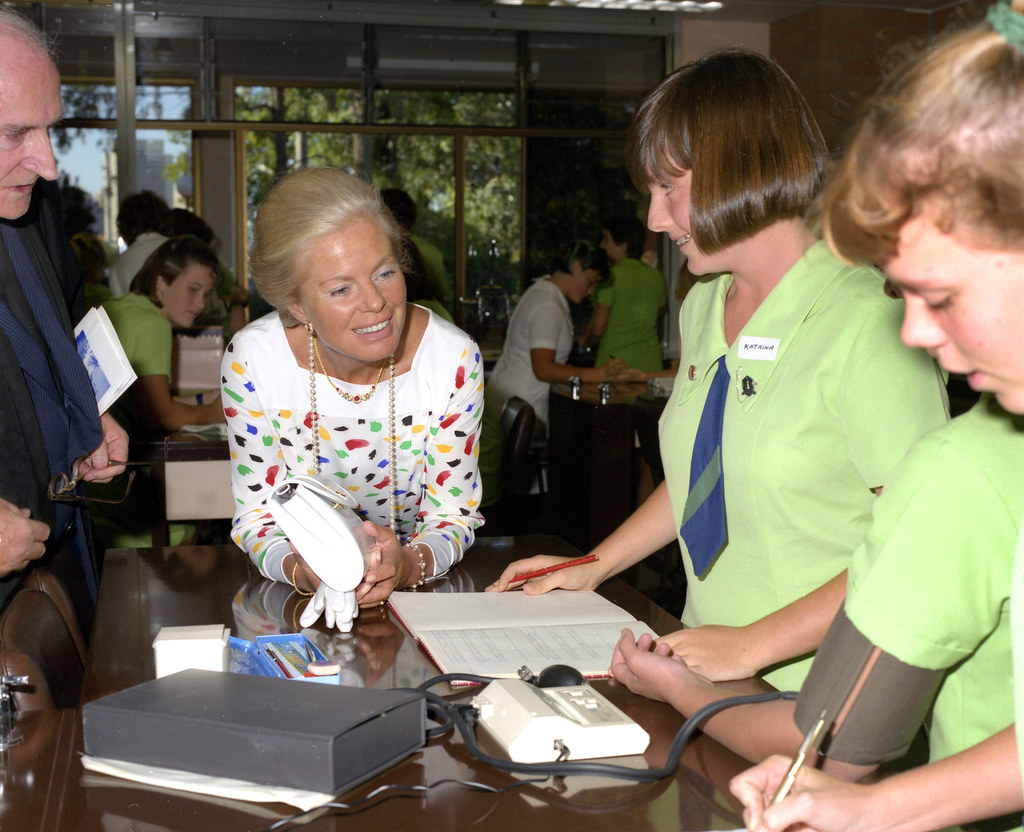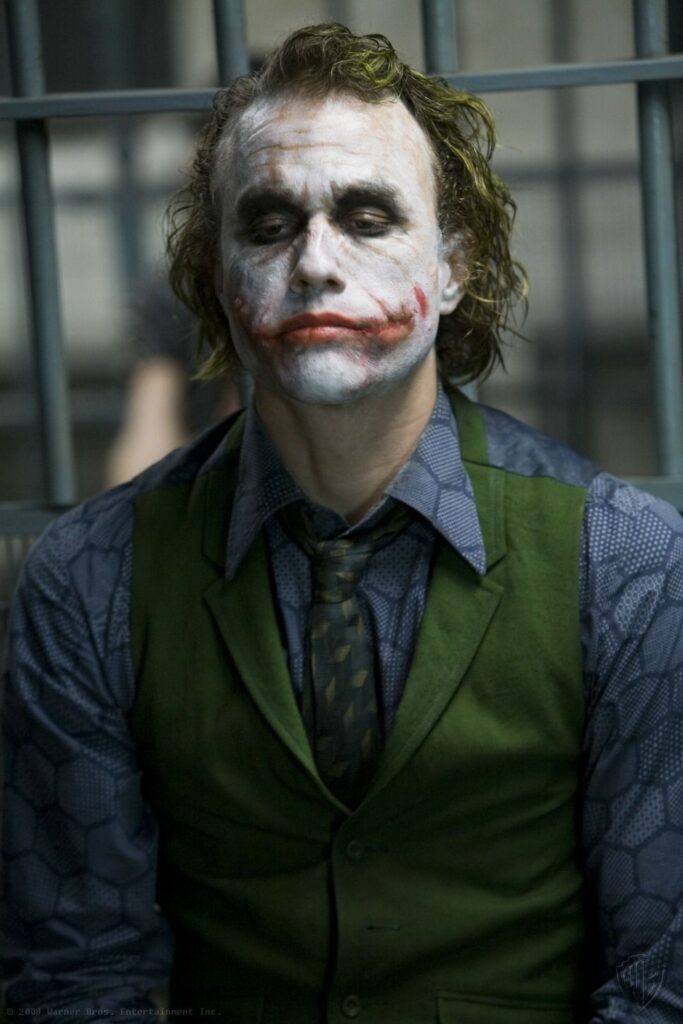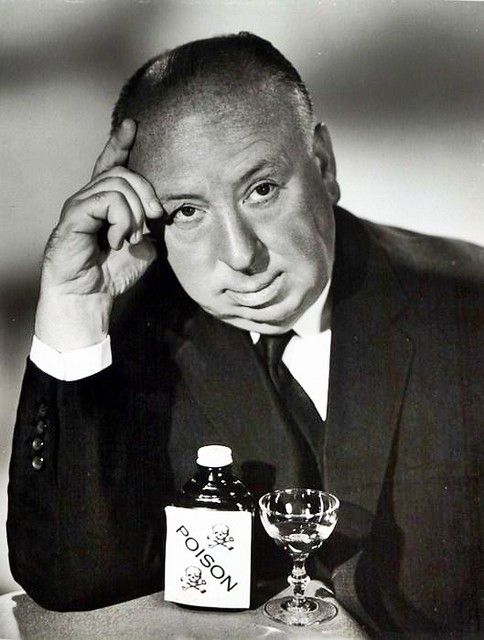
Christopher Nolan’s remarkable talent as a filmmaker is, without a doubt, a well-established fact. He has consistently captivated cinematic audiences with each of his films, managing to traverse different genres while imprinting them with his distinctive style. This unique approach has garnered global attention, making his works universally accepted and positioning him as one of the most accessible directors working today. His instant fame, largely attributed to his cheeky yet massively intriguing style, truly skyrocketed with ‘The Dark Knight Trilogy,’ a series that has since cultivated a massive cult following worldwide.
While Nolan’s films are often lauded for their intricate plots, an arguably overlooked aspect is the depth and fascination of his characters. These individuals are just as absorbing and essential as the other elements of his filmmaking, providing the emotional and ideological anchors for the sprawling narratives. Twenty years after ‘Batman Begins’ first ushered in a new era of gritty and grounded superhero movies, it’s the unforgettable characters that truly resonate, having had the most profound impact on Bruce Wayne, Batman, and Gotham City itself.
We’re about to embark on an exciting journey, taking a closer look at ten of these indelible figures who shaped the very fabric of Nolan’s masterpiece. From unexpected heroes to challenging adversaries, each character’s presence was crucial to the trilogy’s success and its lasting legacy. Let’s dive into the first half of this iconic lineup, celebrating the unforgettable roles that continue to spark discussion and admiration two decades later.

1. **The Prisoner**Most wouldn’t initially consider a seemingly random character, whom Batman never even meets onscreen, as a pivotal figure in his crime-fighting career. Yet, the prisoner, with Tommy “Tiny” Lister’s huge, imposing presence, profoundly challenges our preconceived notions of what constitutes a “good guy” or a hero. In the epic ferry scene in ‘The Dark Knight,’ the Joker orchestrates a diabolical experiment, rigging two ferries – one carrying citizens and the other, prisoners – with explosives, placing each detonator on the opposite boat.
The Joker’s sinister goal was to prove his nihilistic worldview: that Gotham’s citizens weren’t worth saving, as they would readily kill each other to ensure their own survival. However, his ingenious plan was spectacularly shattered not by an upright, law-abiding citizen, but by this very criminal. It was the prisoner who, taking the detonator from a fearful civilian, chose life over the false dilemma of ‘survival,’ refusing to blow up the other boat and inspiring the citizens to do the same.
This single, powerful act of defiance by a man on the opposing side of the Dark Knight raises profound questions. Did Batman’s presence, his very crusade, inspire this choice, or did even the lowest in Gotham possess enough moral and ethical standards, a sense of community, to inspire Batman himself? This unexpected hero prevents Batman from succumbing to the Joker’s nihilistic outlook and strengthens his resolve to continue protecting the city, proving that hope can emerge from the most unlikely places.
Read more about: Miss the ’90s? These 14 Earth-Shaking Events Defined a Decade of Unprecedented Change—Their Impact Still Resonates!

2. **Scarecrow**Cillian Murphy’s portrayal of the Scarecrow is a unique and constant presence throughout the Dark Knight Trilogy, making him the only recurring villain in the series. Beyond his initial appearance in ‘Batman Begins,’ each subsequent cameo was a delightful surprise for the audience, cementing his role as a persistent thorn in Batman’s side. Jonathan Crane, as Scarecrow, masterfully exploits the many factions within Gotham, reveling in the spectacle of people overcome with fear.
His chilling enjoyment of fear is not merely psychological; he weaponizes it, creating a pervasive atmosphere of terror. This extends into ‘The Dark Knight Rises,’ where he even aligns himself with Bane’s autocratic government, participating in the perverse judging of the wealthy and the state. Scarecrow embodies the very essence of fear, a primal force that Batman himself must confront and, ultimately, master.
Early in the trilogy, we witness how Batman consciously utilizes his own fears as a tool and engine for his crusade for justice and protection of the innocent. The head-on conflict with Scarecrow vividly illustrates this internal triumph, serving as a powerful reminder that overcoming our fears is an ongoing battle for all of us. Scarecrow’s enduring presence ensures that the psychological dimension of Batman’s fight for Gotham is never far from the surface, making him far more than just a typical villain.
Read more about: Beyond the Red Sauce: 14 Mind-Blowing Facts About ‘The Godfather’ You Absolutely Didn’t Know

3. **Bane**’Real talk: Bane (Tom Hardy) is Clubber Lang from Rocky III.’ This vivid comparison from the text perfectly encapsulates his role in ‘The Dark Knight Rises.’ Bane’s entire purpose in the final installment is to unequivocally demonstrate to Bruce Wayne that he is ‘washed,’ that he no longer possesses the same fight he once did, and that a return from retirement is simply not an option. This dynamic is so palpable that even Alfred’s earnest plea for Bruce not to face him early in the film mirrors Mickey’s desperate pleas to Rocky in ‘Rocky III.’
Beyond these playful comparisons, Bane emerges as a masterful foil for both Bruce and Gotham. He represents a ‘false class savior,’ a manifestation of the lies and compromises made by Bruce and Commissioner Gordon following the Joker’s reign of terror and Harvey Dent’s tragic fall from grace. Bane is the embodiment of ‘those lies coming home to roost,’ reflecting real-life inspirations such as the Occupy Wall Street protests, which explore the complex idea of a wealthy billionaire unilaterally deciding what’s best for a city, often at the expense of those with less.
This raises crucial questions for the audience: Should Bruce have ever embraced his role as a costumed adventurer? Was abandoning his crusade the right path for Gotham, or did it leave a void for figures like Bane to exploit? Tom Hardy’s performance masterfully sells the character’s transition ‘from the monster-heel luchador look of the comics to a captivating European populist terrorist,’ creating an iconic villain in his own right. Nolan himself noted that Bane represented ‘what Batman could have become if he continued in the League of Shadows,’ underscoring his chilling significance as an alternate, darker path for the hero. Bane’s calm, ruthless demeanor and soft-spoken confidence, even when issuing threats, made him a disarming and truly terrifying presence, maintaining dominance in any situation.
Read more about: Are You That Gamer? Unmasking the 12 Online Gaming Habits That Drive Teammates and Opponents Absolutely Wild!

4. **Catwoman/Selina Kyle**’The Dark Knight Rises’ magnificently reintroduced Catwoman to the cinematic landscape, offering a fresh, compelling take on the iconic character. This iteration of Selina Kyle, heavily inspired by Frank Miller’s retooling in ‘Batman: Year One,’ wisely sheds the mystical cat powers seen in previous film adaptations. Instead, she evolves into a much more grounded, ‘lower-class Robin Hood-style figure from modern comics,’ making her instantly relatable and relevant to the film’s themes of class disparity.
Selina’s presence brings a unique form of inspiration, compelling Bruce to suit back up after his retirement, but in a way his usual allies never could. She opens his eyes to a side of Gotham he often overlooks, providing ‘an actual voice from the poor and lower-class citizens of the city.’ More than that, she represents individuals who commit crimes out of sheer ‘necessity due to a lack of options,’ rather than grand plots or a desire to exploit the citizenry.
Her arrival reignites Bruce’s dormant drive to help Gotham, a drive that had waned significantly since the devastating loss of Rachel Dawes. Selina’s perspective, much like Rachel’s, forces Bruce to confront the uncomfortable truth that his ‘boogeyman persona’ and reliance on the police, politicians, and the wealthy alone are not enough to truly aid the people of the city. The undeniable attraction and classic cat-and-mouse dynamic between Batman and Catwoman, brought to life by Anne Hathaway and Christian Bale’s palpable chemistry, further enriches their complex relationship, making Selina an indispensable character in the trilogy’s concluding chapter.

5. **Rachel Dawes**Rachel Dawes, a character portrayed by two actresses across the trilogy, serves as a more classic-styled love interest, yet her importance extends far beyond that trope. She is, outside of Alfred, the person who knows Bruce best, possessing a deep moral center and an unwavering dedication not only to justice but to Gotham itself. Rachel acts as a profound inspiration for Bruce’s journey, her influence being as significant as the traumatic sight of bats in the cave that initially spurred his transformation.
Bruce’s trust in Rachel is absolute; he confides his secret identity to her from the very moment he creates it. This unparalleled love for Rachel is a defining characteristic that sets Nolan’s Batman apart from many other interpretations. As much as he is driven to protect and improve the city, Bruce harbors a deep desire not to remain the Caped Crusader indefinitely. He yearns for a life beyond being Gotham’s protector, a life he envisions sharing with Rachel.
Her own commitment to fighting crime as a prosecutor, coupled with her relationship with Harvey Dent, beautifully complicates the intricate narrative of ‘The Dark Knight.’ When the Joker cunningly targets both Rachel and Dent, it directly threatens Bruce’s deepest hopes and aspirations, ultimately shattering his goals. Her tragic loss forces Bruce to make an agonizing choice – to sacrifice Batman’s reputation to save the city. Rachel, in essence, was his ‘north star,’ and her devastating demise is the very catalyst that compels our gritty hero to temporarily cease being Gotham’s savior, leaving an indelible mark on Bruce’s psyche and the trilogy’s overarching narrative.”
Continuing our deep dive into the architects of destiny that defined Nolan’s epic saga, we now turn our attention to the remaining five core characters. These individuals, whether allies or adversaries, left an indelible mark on the narrative, shaping the very soul of Gotham and solidifying ‘The Dark Knight Trilogy’ as a cinematic masterpiece. Their profound impact extended beyond mere plot devices, offering rich thematic depth and unforgettable performances that resonate with fans even two decades later.
Read more about: 16 Movie Deaths That Broke Our Hearts

6. **Lucius Fox**Played with understated brilliance by Morgan Freeman, Lucius Fox is far more than just Batman’s Q. He serves as an indispensable genius inventor and executive, forming a crucial part of Bruce’s inner circle alongside Alfred. This version of Fox acts as a vital mentor figure, possessing the unique ability to both constructively critique Bruce’s decisions and enlighten him with knowledge he might not otherwise possess. His pragmatic intelligence and moral compass offer a grounding presence amidst Bruce’s intense crusade.
Fox’s connection to Bruce runs deep, as he knew Bruce’s father, Thomas Wayne. This shared history positions him as one of the essential father figures in the orphaned hero’s journey, guiding him through the complexities of his dual life. By cleverly re-purposing unused Wayne Enterprises technology, Lucius Fox effectively equips Batman with the advanced gadgetry needed for his fight against crime, creating a dynamic that often feels reminiscent of a James Bond-esque relationship, where cutting-edge tools are always at the hero’s disposal.
The evolution of their mentor-mentee dynamic is one of the most satisfying arcs in the trilogy. Bruce, initially reliant on Fox’s ingenuity, ultimately demonstrates his own growth and mastery. In a poignant moment, he even manages to fix something that Fox couldn’t, signaling that the student has indeed become the master. This powerful shift not only highlights Bruce’s personal development but also provides a fulfilling, conclusive chapter to their collaborative journey, showcasing a true partnership forged in the fires of Gotham’s struggle.
Read more about: The Ultimate Bat-Ranking: All 7 Live-Action Batman Actors, From Worst to Best

7. **Harvey Dent**”I believe in Harvey Dent.” This wasn’t merely a campaign slogan for District Attorney; it was the very heartbeat of ‘The Dark Knight,’ embodying Gotham’s fervent hope for a brighter future. Harvey Dent, portrayed with compelling conviction, represented everything good and possible for the city. He was a beacon of incorruptible justice, fearlessly confronting corrupt police and dismantling organized crime syndicates. His unwavering dedication inspired Gotham citizens, making them believe that genuine change was within reach.
Rachel Dawes, in her unwavering belief in Dent’s potential, introduced him to Bruce Wayne, envisioning a future where Gotham’s legal system could truly flourish under his leadership. Dent’s integrity was so profound that Bruce even contemplated passing the mantle of Gotham’s protector to him, imagining a future where Batman would no longer be necessary. This immense trust underscored Dent’s role as the city’s potential savior, a symbol of hope that could finally allow Bruce to shed his cowl and live a normal life.
However, the Joker, with his twisted genius, recognized the flicker of darkness beneath Dent’s righteous facade. He understood that even the most virtuous souls could be broken, declaring that “all it takes is one bad day” to plunge anyone into madness. The Joker’s cunning plan to target both Dent and Rachel was a direct assault on Gotham’s hope, meticulously designed to dismantle the city’s faith and corrupt its “White Knight.” He succeeded in making Harvey fall, transforming him into the vengeful Two-Face, a chilling reflection of the Joker’s own chaotic philosophy rather than Batman’s moral fortitude.
Dent’s tragic submission to his darkest impulses plunged Bruce into a profound despair, a state he would not fully escape until his physical and emotional reckoning with Bane in ‘The Dark Knight Rises.’ Though Gotham ultimately survived the immediate threat, the hope it had so desperately embraced through Harvey Dent was shattered, leaving an indelible scar. His fall serves as a powerful reminder of the fragility of justice and the enduring battle against the darkness that lurks within us all, impacting Bruce and the city for years to come.
Read more about: Beyond Blockbusters: 10 Visionary Directors Who Redefined Cinema in the 1970s, And Whose Films Still Captivate Audiences Today.

8. **Joker**It’s virtually impossible to discuss ‘The Dark Knight Trilogy’ without immediately acknowledging the monumental, genre-redefining portrayal of the Joker by Heath Ledger. His performance was so utterly iconic that it arguably transcended the hero himself, captivating audiences in a way few villains ever have. Initially, the casting received a wave of negative feedback, yet today, that skepticism has been utterly erased, as if it never existed, a testament to Ledger’s transformative artistry.
Ledger’s Joker didn’t just play a character; he reinterpreted the very essence of the Clown Prince of Crime for a new cultural era. Perfectly suited for the Michael Mann-inspired crime film world of ‘The Dark Knight,’ this iteration was raw, unpredictable, and terrifyingly intelligent. His performance was so groundbreaking that it even influenced how the Academy Awards recognized superhero films, forever changing the cinematic landscape. It’s also one of the rare instances where audiences actively debate whether the villain’s twisted philosophy holds some unsettling truth.
From his smeared, chaotic makeup to the chilling, fabricated stories he spun about his scars, the Joker embodied a brand of nihilistic terror that Bruce Wayne simply couldn’t comprehend, despite Alfred’s constant counsel. His campaign of psychological warfare and indiscriminate terrorism shook every level of Gotham society – from the common citizen to the government, and even the criminal underworld. The Joker’s primary objective was to attack the city’s very soul, aiming to prove his dark worldview that under pressure, everyone is just as chaotic and self-serving as he is.
In a devastating masterstroke, the Joker targeted Harvey Dent, the ‘heart of the city,’ shattering Batman’s deepest hopes for Gotham’s redemption. While the Joker was ultimately apprehended, he achieved his most profound goals: eroding public trust and forcing Batman into an impossible moral compromise. It wasn’t Batman who proved the Joker wrong in the end, but an unlikely convict, highlighting the unpredictable nature of human morality. Batman and Gordon were forced to fabricate a lie to protect the city’s fragile peace, transforming the Dark Knight into a public villain. It’s a rare and powerful narrative choice to see Batman “lose” in such a fundamental way, and with the Joker, it made perfect, unsettling sense.
Read more about: Beyond the Final Curtain: 14 Beloved Stars Whose Last Roles Left an Indelible Mark on Hollywood

9. **Commissioner James Gordon**The enduring legacy of Batman is inextricably linked with Commissioner James Gordon; he is an ever-present force, a constant ally since the earliest tales of the Caped Crusader. In Nolan’s trilogy, Gordon stands out as the sole police officer whom Batman truly trusts, forming a bond that transcends the pervasive corruption within Gotham’s law enforcement. He often acts as a point-of-view character for the audience, navigating the treacherous waters of being an honest cop in a city riddled with internal deceit and external threats.
Despite the seemingly insurmountable challenges and the inherent risks, Gordon consistently places his faith in Batman through every crisis that befalls Gotham. From the poisoned water scare in ‘Batman Begins’ to the Joker’s reign of terror and the city’s eventual takeover by Bane, Gordon’s trust in the masked vigilante remains steadfast. This unwavering belief stems from a deeper, more personal connection: it was Gordon, the kind policeman, who offered comfort to young Bruce Wayne on the night his parents were murdered, helping to preserve a small flicker of faith in justice and goodness that eventually led Bruce to become Batman.
His loyalty to Batman, and to the ideal of justice, persists even through the morally ambiguous implications of the Dent Act, a flawed plan designed to maintain peace at a great cost. The climax of ‘The Dark Knight Rises’ beautifully culminates their connection, as Gordon finally uncovers Batman’s true identity, solidifying their profound partnership. His simple, compassionate act of presence for a grieving child years ago ripples through time, ultimately proving instrumental in saving the city and countless lives, illustrating the profound impact of a single, good person in a world descending into chaos.

10. **Alfred Pennyworth**Let’s be honest, Alfred Pennyworth is the emotional bedrock of ‘The Dark Knight Trilogy,’ and Michael Caine’s portrayal completely revolutionized how audiences perceived this classic character. Far from the stereotypical English butler, Caine’s Alfred was given a compelling backstory as a former soldier, a crucial detail that has influenced nearly every subsequent adaptation of the character. Caine infuses Alfred with an undeniable coolness, bringing a grounded, experienced gravitas to his role as Bruce’s most trusted confidant and advisor.
Alfred’s rich history and experiences provide a deep well of wisdom that informs each film. He serves as Bruce’s moral compass and emotional anchor, always prepared to tell him the unvarnished truth, no matter how difficult. Whether it’s his candid remarks about a soldier who ‘threw away jewels’ and wanted to ‘see the world burn,’ or his pitch-perfect, chilling assessment of Bane, Alfred is unwavering in his commitment to guide Bruce with honesty and insight, even when it’s painful for both of them.
He consistently reminds Bruce of his father’s profound lesson from the first film: “Why do we fall, Master Bruce? So we can learn to pick ourselves back up.” This mantra becomes more than just a piece of advice; it’s a recurring theme that resonates not only with Bruce’s personal journey but also with Gotham City’s continuous struggle for redemption. Alfred ensures that this crucial lesson of resilience and perseverance is never far from the minds of both the hero and the audience, underscoring the universal nature of overcoming adversity.
The emotional core of the trilogy reaches its zenith in their heartbreaking falling out during ‘The Dark Knight Rises,’ featuring some of the most raw and resonant performances in the entire series. Ultimately, Nolan’s Batman canon achieves a unique and deeply satisfying conclusion, focused on Alfred witnessing Bruce finally living out the future he always desired for him. This vision of happiness for Bruce, seen through Alfred’s loving eyes, grants this version of Batman an ending that very few others get to experience, cementing Alfred as perhaps the most vital character in the entire saga.
Read more about: The Ultimate Bat-Ranking: All 7 Live-Action Batman Actors, From Worst to Best
These ten characters, meticulously crafted and flawlessly brought to life, stand as testament to Christopher Nolan’s unparalleled storytelling. They are more than just figures in a superhero narrative; they are complex individuals whose struggles, triumphs, and profound impacts resonated deeply, shaping not only Batman’s world but also the very fabric of cinematic storytelling. Two decades on, their influence endures, reminding us why ‘The Dark Knight Trilogy’ remains an undisputed masterpiece and a benchmark for all superhero films to follow. They aren’t just characters; they are legends.


